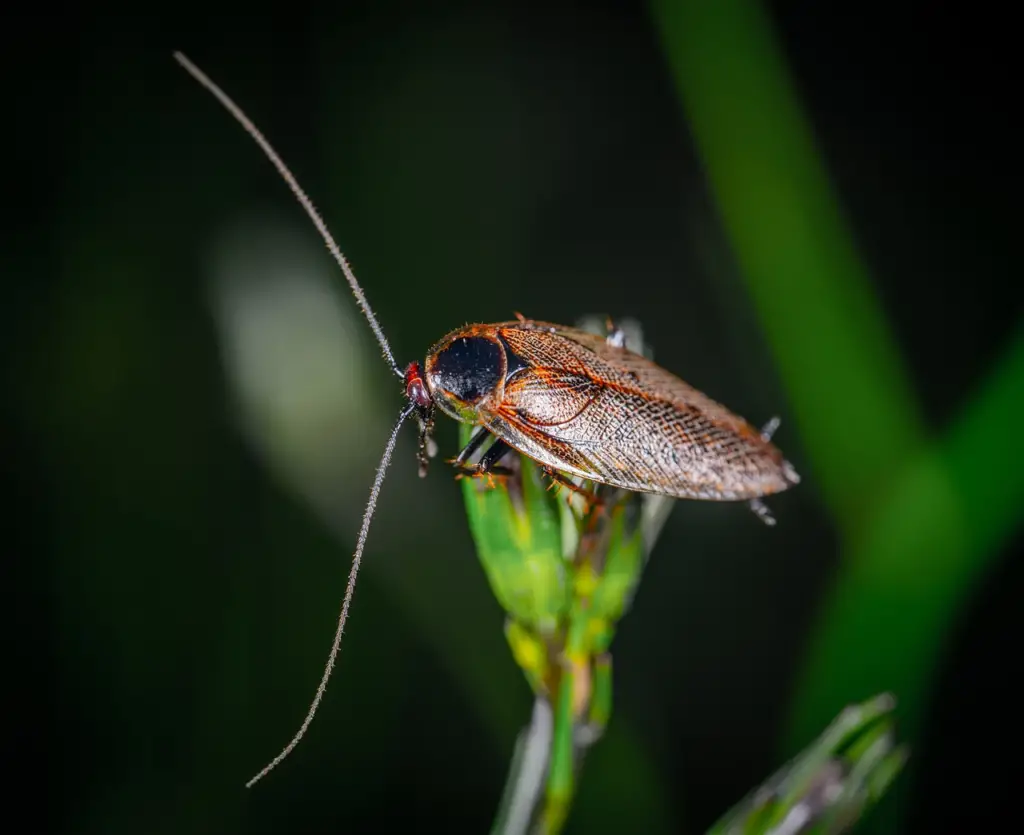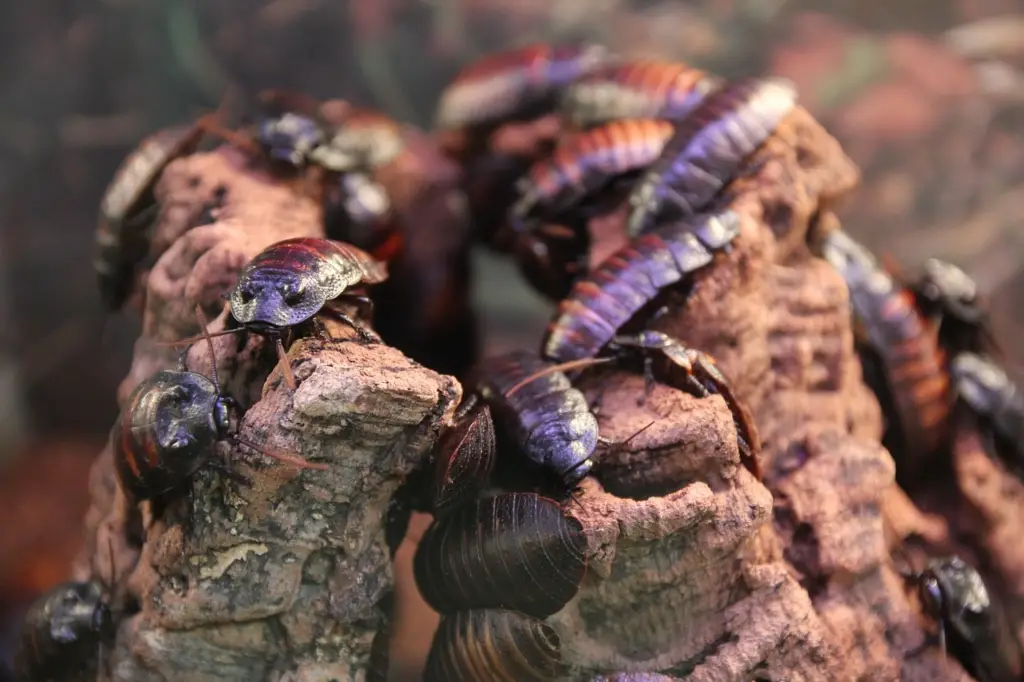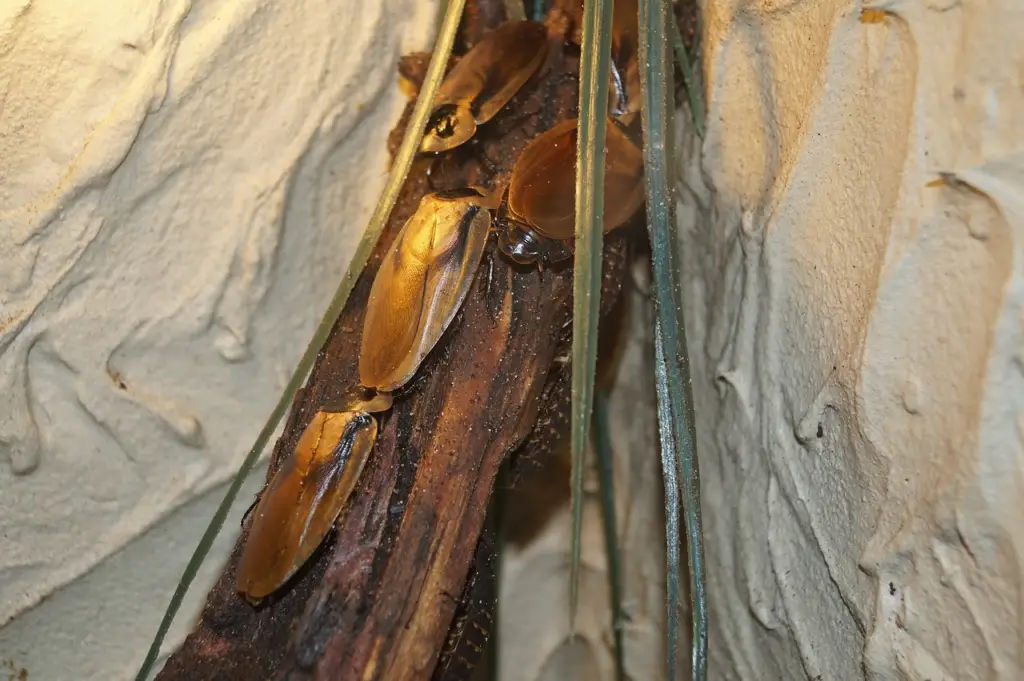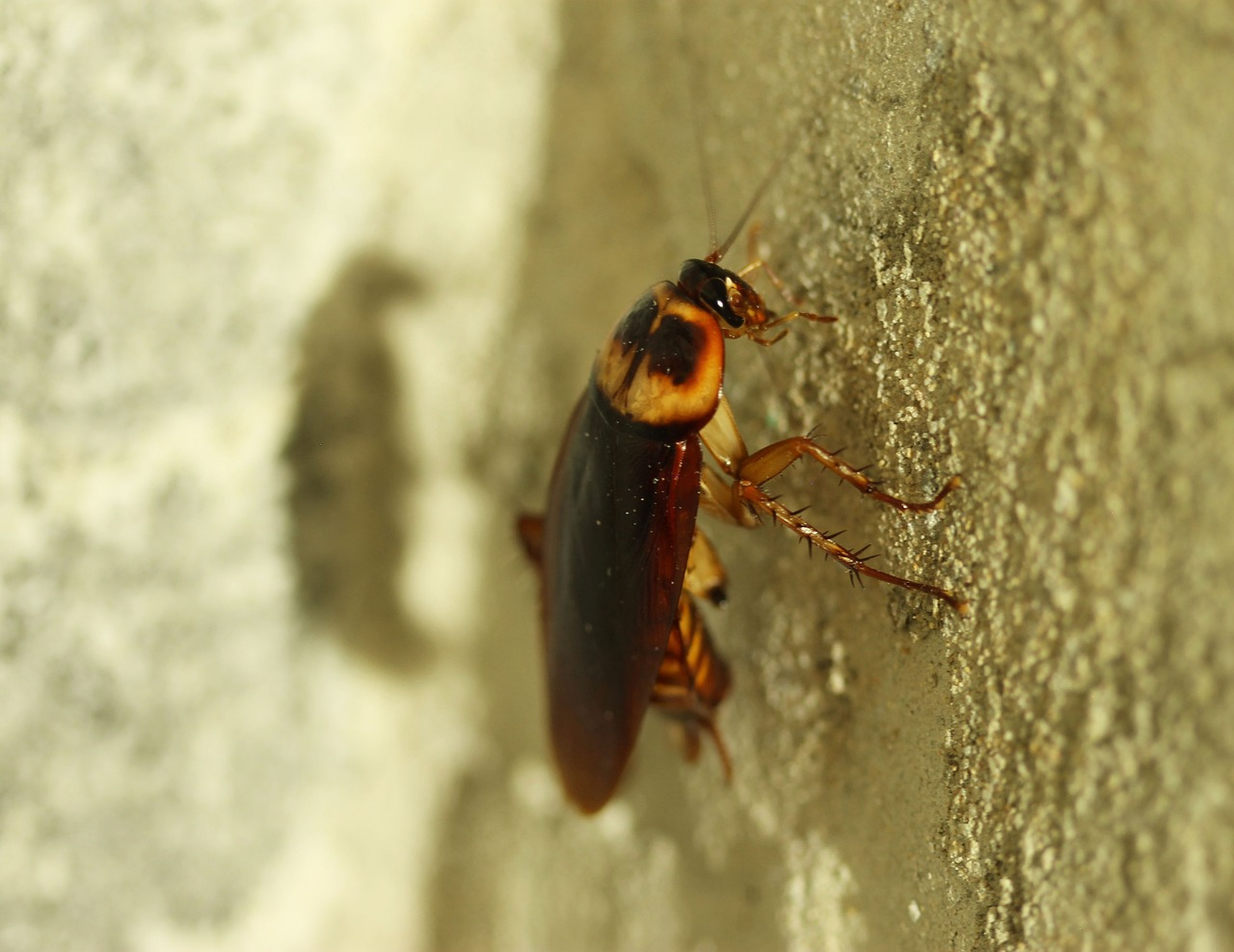Las Vegas, renowned for its vibrant nightlife, grand casinos, and endless entertainment, has another less glamorous reputation: a significant cockroach problem. Visitors and residents alike have often encountered these resilient pests in various settings, from residential areas to commercial establishments. This article delves into the reasons behind the high prevalence of cockroaches in Las Vegas, examining environmental factors, human behaviors, and urban infrastructure that contribute to the issue.
The Resilient Nature of Cockroaches
Cockroaches are among the most resilient insects on the planet. They have been around for over 300 million years, surviving through various catastrophic events that wiped out many other species. Their ability to adapt to diverse environments is a key factor in their persistence. Cockroaches can thrive in both extreme heat and cold, go without food for extended periods, and resist many common forms of pest control.
Environmental Adaptability
Cockroaches are highly adaptable and can survive in a wide range of environments. This adaptability makes Las Vegas, with its unique climate and urban environment, a suitable habitat. The city’s hot, arid climate is ideal for certain species of cockroaches, particularly the American and German cockroaches. These species are commonly found in warm climates and can easily make their homes in the nooks and crannies of urban settings.

Climate Conditions in Las Vegas
Las Vegas is located in the Mojave Desert, which means it experiences a hot desert climate. The city sees long, scorching summers with temperatures often soaring above 100 degrees Fahrenheit and mild winters with minimal rainfall. These climatic conditions are conducive to cockroach survival and proliferation for several reasons.
Heat and Humidity
While cockroaches are highly adaptable, they prefer warm and humid environments. Las Vegas, despite being a desert, offers microenvironments that provide these conditions. Irrigated lawns, lush landscapes, and water features in homes, hotels, and casinos create pockets of humidity. Additionally, indoor areas often have controlled climates that offer the warmth and moisture cockroaches need. Kitchens, bathrooms, and basements are common indoor habitats where cockroaches find food, water, and shelter.
Seasonal Activity
Cockroach activity tends to increase during the warmer months. In Las Vegas, this means almost year-round activity, with peak infestations occurring during the summer. The constant warm weather allows for continuous breeding cycles, leading to larger populations. Cockroaches are nocturnal creatures, becoming more active at night when the temperatures are slightly cooler but still warm enough to support their activities.
Why Does Las Vegas Have So Many Cockroaches?
Several specific factors contribute to the high number of cockroaches in Las Vegas:
Urban Infrastructure
The rapid urban development and unique infrastructure of Las Vegas provide ideal conditions for cockroaches. The combination of densely packed buildings, extensive sewer systems, and high tourist traffic creates an environment ripe for infestations. The sewer systems in particular, with their dark, damp, and warm conditions, serve as perfect breeding grounds for these pests. From there, cockroaches can easily enter homes and businesses through drains and pipes.
Abundance of Food and Water
Las Vegas’s abundance of food sources, particularly in the hospitality and entertainment sectors, attracts cockroaches. Restaurants, hotels, and casinos generate significant amounts of food waste, which can be a major attractant for these pests. Cockroaches are scavengers and can feed on almost anything, from leftover food to decaying organic matter. The high turnover of tourists also means constant opportunities for cockroaches to find new sources of food and water.
Human Behavior
Human behavior significantly contributes to the cockroach problem. Improper waste management, poor sanitation practices, and inadequate food storage can create environments conducive to cockroach infestations. Additionally, the constant influx of tourists brings more food waste and litter, providing ample resources for cockroaches to thrive. This explains why America’s top 25 worst cities for cockroaches are all large cities, with bigger populations.
Construction and Landscaping
The ongoing construction and landscaping activities in Las Vegas disturb existing habitats and create new ones. New construction can displace cockroaches, causing them to seek shelter in nearby buildings. Landscaping efforts, particularly those involving water features and lush vegetation, create ideal environments for cockroaches. The use of mulch, which retains moisture, provides additional hiding spots and breeding grounds for these pests.

What Types of Cockroaches Live in Las Vegas?
Although there are thousands of different cockroach species globally, Las Vegas primarily contends with four: German, Oriental, American, and Australian cockroaches. Each of these species has unique characteristics and behaviors that contribute to their proliferation in the city.
German Cockroaches
German cockroaches are one of the most common and troublesome pests in Las Vegas. These small, light brown cockroaches are easily identified by the two dark parallel stripes running down their backs. German cockroaches are notorious for their rapid reproduction and preference for warm, humid environments, making kitchens and bathrooms their favored habitats. They are adept at hiding in small crevices and can quickly establish large infestations if not promptly controlled. Their presence is not only a nuisance but also a health concern, as they can contaminate food and surfaces with pathogens.
Oriental Cockroaches
Oriental cockroaches, ofen referred to by locas as Las Vegas water bugs, are larger and darker than their German counterparts. These shiny, black or dark brown cockroaches are typically found in damp, cool areas such as basements, sewers, and drains. They are less likely to be found inside homes compared to other species but can become a significant problem in moist outdoor environments. Oriental cockroaches are slower to reproduce but can still pose a health risk by spreading bacteria and producing a strong, unpleasant odor.
American Cockroaches
American cockroaches are the largest of the common species found in Las Vegas, often reaching up to two inches in length. These reddish-brown cockroaches have a distinctive yellowish figure-eight pattern on the back of their heads. They thrive in warm, moist environments and are frequently found in sewers, basements, and commercial buildings. Despite their name, American cockroaches can fly, which can be particularly alarming for residents. Their size and propensity to invade food storage areas make them a significant pest, capable of contaminating food and spreading disease.
Australian Cockroaches
Australian cockroaches, though less common than the other three species, are still present in Las Vegas. These cockroaches are often mistaken for American cockroaches due to their similar size and color. However, Australian cockroaches can be distinguished by the yellow markings on their thorax and wings. They prefer warm, humid environments and are typically found in greenhouses, gardens, and around lush landscaping. They can also invade homes, particularly those with extensive indoor plants or moisture issues.
Like other cockroach species, Australian cockroaches can contaminate food and spread pathogens, posing health risks to humans.
Understanding the specific types of cockroaches that inhabit Las Vegas is crucial for effective pest management. Each species requires targeted control strategies to address their unique behaviors and habitats, ensuring a comprehensive approach to reducing infestations in both residential and commercial settings.

Preventive Measures and Control Strategies
Given the complexity of the cockroach problem in Las Vegas, effective control and prevention require a multifaceted approach. This includes measures at the individual, community, and municipal levels.
Individual and Household Measures
Residents can take several steps to reduce the likelihood of cockroach infestations in their homes. Key preventive measures include:
- Proper Sanitation: Keeping living spaces clean and free of food crumbs and spills is crucial. Regular cleaning of kitchens and bathrooms can help eliminate potential food and water sources for cockroaches.
- Sealing Entry Points: Sealing cracks and crevices around doors, windows, and utility pipes can prevent cockroaches from entering homes. Installing door sweeps and repairing damaged screens are also effective measures.
- Proper Food Storage: Storing food in airtight containers and promptly disposing of garbage in sealed bins reduces the availability of food for cockroaches.
- Reducing Moisture: Fixing leaky faucets and pipes, using dehumidifiers, and ensuring proper ventilation can minimize moisture, making the environment less hospitable for cockroaches.
- Pest Control Products: Hiring professional pest exterminators can often be expensive, which is why many Sin City residents opt for DIY pest control solutions. From bait gels to pheromone traps and sprays, there are many products that allow you to eliminate cockroaches from your home by yourself. Here are some of our favorites:
- For use in: indoors or outdoors, in commercial or residential areas. Keep tightly capped and use within 2 years.
- Application: Do not spray near baits, do not use heavy detergents or cleaners, or do not use in very dusty area.
- Gel will dry out and get a dry skin on top but roaches will still eat it up to a year. However, if contaminated or gone, reapply.
- Pet safe: yes, when used as directed ALWAYS READ THE LABEL BEFORE USE!!
- KILLS ON CONTACT: Hot Shot Fogger With Odor Neutralizer kills on contact and controls heavy infestations – and keeps killing for up to 2 months.
- KILLS HIDDEN BUGS: Creates a fine, penetrating mist that reaches deep into cracks and crevices to kill the bugs you see and kill the bugs you don’t see.
- WHERE TO USE: Use in enclosed spaces such as apartments, attics, basements, barns, boat cabins, cabins, campers, crawl spaces, garages, homes, households, sheds, storage areas and trailers.
- NON-STAINING: This clear, non-staining formula won’t leave a wet, messy residue.
- EACH CAN COVERS 2,000 CU FT: Treats 2,000 cubic feet of unobstructed space
- VERSATILE! 🚫🪳 Easy to use, water resistant, adjustable structure allows for maximum versatility in all kinds of spaces like under sinks, behind toilets, and behind appliances.
- CLEAN! 🌱 Safe and odor free. Great for homes with children and pets, and sensitive (or squeamish) adults.
- POWER! 👊 The secret to our amazing trapping power, the HOY HOY Trinity, combines a welcome mat, irresistible bait, and the stickiest wavy glue.
- TIDY! 🗑️ Design features include a pick up knob, for easier, less anxious disposal. Reduces the “ick” factor.
- WE’RE #1! 🏆 Japan’s best selling roach trap, backed by 100+ years experience in pest control, with 2500 million units sold in 100+ countries, now is available to you!
Community and Business Measures
Businesses and community organizations also play a crucial role in controlling cockroach populations. Effective measures include:
- Regular Inspections: Routine inspections of commercial establishments, particularly restaurants and hotels, can help identify and address cockroach infestations early.
- Waste Management: Implementing strict waste management practices, such as using sealed dumpsters and ensuring regular trash collection, can reduce food sources for cockroaches.
- Professional Pest Control: Engaging professional pest control services for regular treatments and inspections can help manage and prevent cockroach infestations in commercial properties.
- Public Education: Community awareness programs that educate residents and business owners about effective cockroach prevention and control strategies can contribute to reducing infestations.
Municipal Measures
At the municipal level, city authorities can implement several strategies to address the cockroach problem:
- Infrastructure Maintenance: Regular maintenance and cleaning of sewer systems and public spaces can help reduce cockroach habitats. Ensuring that public restrooms, parks, and other communal areas are kept clean and dry is essential.
- Building Codes and Regulations: Enforcing building codes that require proper sealing of buildings and the use of cockroach-resistant materials can prevent infestations in new constructions.
- Integrated Pest Management (IPM): Implementing IPM programs that combine biological, physical, and chemical control methods can provide a sustainable approach to managing cockroach populations. IPM focuses on long-term prevention and minimizes the use of harmful chemicals.

Conclusion
The prevalence of cockroaches in Las Vegas is a multifaceted issue driven by the city’s unique climate, urban infrastructure, and human behaviors. While cockroaches are inherently resilient and adaptable, effective control and prevention require a concerted effort from individuals, businesses, and municipal authorities. By understanding the underlying factors contributing to the problem and implementing comprehensive strategies, Las Vegas can mitigate its cockroach issue and create a more pleasant environment for both residents and visitors.
Frequently Asked Questions
Why does Las Vegas have so many water bugs?
Las Vegas has a high prevalence of water bugs, particularly Oriental cockroaches, due to its unique urban and environmental conditions. The city’s extensive sewer systems, irrigation practices, and lush landscaping create pockets of moisture in the otherwise arid desert climate, providing ideal habitats for these pests. Water bugs thrive in damp, cool areas like basements, drains, and outdoor spaces with high humidity, making Las Vegas’s infrastructure and landscaping practices particularly conducive to their proliferation.
Which cockroach species live in Nevada?
In Nevada, especially in urban areas like Las Vegas, the primary cockroach species include the German cockroach, Oriental cockroach, American cockroach, and Australian cockroach. German cockroaches are commonly found indoors in warm, humid environments such as kitchens and bathrooms. Oriental cockroaches, or water bugs, prefer damp, cool areas like basements and sewers. American cockroaches are often found in warm, moist environments such as sewers and basements, while Australian cockroaches thrive in lush, humid landscapes and greenhouses.
Are Las Vegas cockroaches dangerous?
Las Vegas cockroaches can pose several health risks to humans. These pests are known to contaminate food and surfaces with bacteria, including pathogens that can cause food poisoning and other illnesses. Cockroaches can also trigger allergies and asthma, particularly in sensitive individuals, due to the allergens present in their droppings, saliva, and shed skins.
Last update on 2024-07-27 / Affiliate links / Images from Amazon Product Advertising API. Please note that this page contains affiliate links, and we may make a commission from any purchases made through these links, at no additional cost to you.



